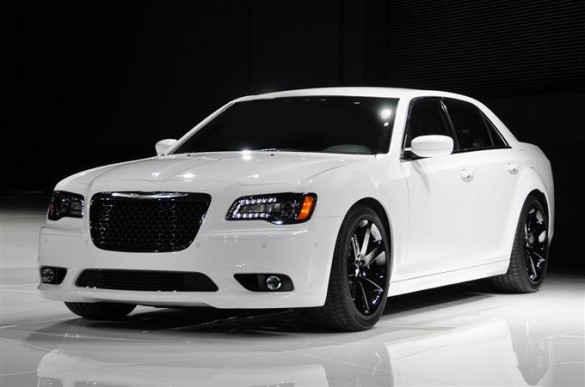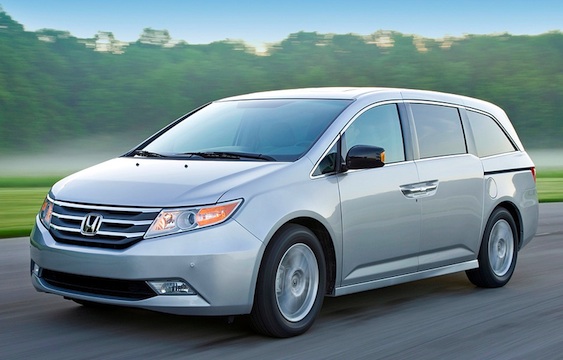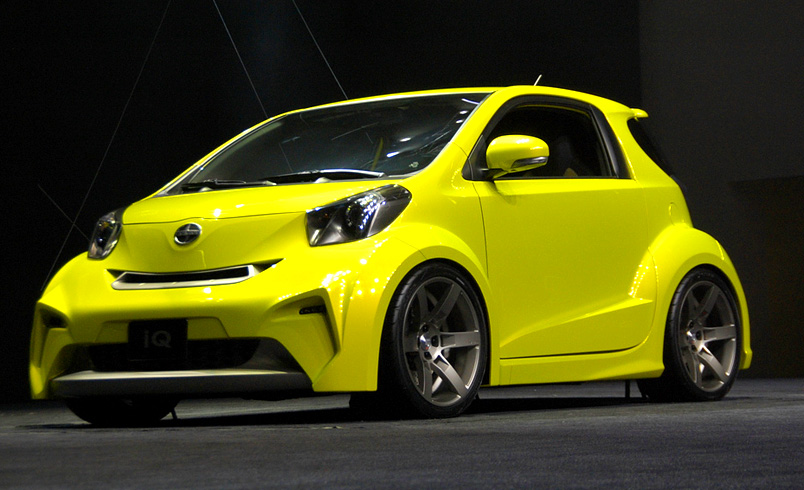There’s a funny scene in The Forty Year Old Virgin (2005) where Steve Carrell’s character explains to a woman he’s called for a date that he won’t be able to pick her up because he rides a bike. “That’s OK,” she tells him, “I love getting on the back of a motorcycle.” At which point Carrell is forced to clarify: “Yeah... I ride a bicycle.” As it turns out, getting a license is just one of the many rites of passage he’s ducked in putting off adulthood in favour of an extended adolescence.
For as long as families have been able to afford cars, learning to drive has been an initiation rite for North American kids, often a bonding experience between parent and child in which a set of sacred principles is transmitted from elder to younger. Like fathers teaching their sons to shave and mothers teaching their daughters about the “feminine hygiene” aisle at the drugstore, learning to drive is one of the milestones we use to mark the end of childhood. The first passing of the keys is not only a gesture of trust that confers a new level of responsibility but also an acknowledgement of independence that entails a new degree of freedom. And when sons and daughters actually get their first car, they finally have the means to leave the comforts of home behind and to make their own way in the world.
 But in many households today, these symbolic rituals are being postponed. In the past year, a number of American news sources reported a similar trend: teenagers are waiting longer to get their licenses. Data from the US Department of Transportation reveals that nearly 45% of American 16-year-olds got driver’s licenses in 1988. Twenty years later, that figure had dropped to just over 30%, with data from certain states showing a continued decline in the past two years. The trend is less pronounced in Canada, where there are far fewer drivers of any age on the road, but the numbers here tell a similar story. In 2009 (the most recent year for which data from Transport Canada is available), there were over 50,000 more drivers aged 16 to 19 than there were in 2003, an increase of nearly 5%. At the same time, however, there were nearly 155,000 more drivers aged 20 to 24, an increase of almost 9%. Demographic changes may partly account for these numbers, but they also suggest that teenagers are no longer streaming into test centres on their first day of eligibility.
But in many households today, these symbolic rituals are being postponed. In the past year, a number of American news sources reported a similar trend: teenagers are waiting longer to get their licenses. Data from the US Department of Transportation reveals that nearly 45% of American 16-year-olds got driver’s licenses in 1988. Twenty years later, that figure had dropped to just over 30%, with data from certain states showing a continued decline in the past two years. The trend is less pronounced in Canada, where there are far fewer drivers of any age on the road, but the numbers here tell a similar story. In 2009 (the most recent year for which data from Transport Canada is available), there were over 50,000 more drivers aged 16 to 19 than there were in 2003, an increase of nearly 5%. At the same time, however, there were nearly 155,000 more drivers aged 20 to 24, an increase of almost 9%. Demographic changes may partly account for these numbers, but they also suggest that teenagers are no longer streaming into test centres on their first day of eligibility.
One reason for this shift is simple economics. Insurance rates for young drivers are almost always among the highest of all classes, and even with a discount for a good record or a driver’s ed certificate, adding a teenage driver to a policy usually means a significant increase in the premium, an expense many families can ill afford in this economy. Whereas in the past teenagers worked part-time or summer jobs to pay their share of the additional cost, youth unemployment in Canada is currently over 17%, more than double the national average. Couple this with the ever-rising cost of gasoline, a greater sensitivity to the environmental consequences of increased fuel emissions, and staggering tuition debt, and it’s not particularly difficult to see why some young people seem to be rethinking the need to get their licenses and that first car as early as possible.

To a certain extent, investments in infrastructure and public transport in the form of expanded routes and longer service hours have also had an impact, but the single greatest catalyst behind this decline is most likely digital. If American Graffiti has taught us anything, it’s that for past generations the car was an integral component of a teenager’s social life, a means for him or her to get out of the house, meet friends, and cruise the streets like Milner in his ’32 Deuce-coupe or else park for a little necking. But the car no longer occupies this exalted place in the culture. Teenagers now stay “connected” through social networking and endless text messages in coded shorthand. They no longer need to leave their rooms in order to have social lives, at least insofar as whatever happens on Facebook, Twitter, Google+, and the rest of the Web passes for a social life.
It’s difficult to say whether it’s a cause or an effect, but a related factor is the trend of arrested development, a kind of juvenilization whereby – far from putting aside childish things – young adults continue to be driven to the mall by their parents so they can spend their allowances on the latest installment of some video-game franchise. Although collision rates in Canada have fallen steadily in the past decade, parents can hardly be blamed for wanting to protect their children by keeping them out of the driver’s seat until they’re mature enough to handle the responsibility. But how are teenagers supposed to mature if parents resist entrusting them with new responsibilities in the first place? Today’s so-called “helicopter” parents, forever hovering over their kids in readiness to swoop in at the first sign of trouble, are neurotically concerned with the physical and emotional welfare of their children, but despite their best intentions their kids can hardly be expected to grow up when they have to bear no hardships, overcome no obstacles, and face no dangers on their own.
The postponement of licensing for young drivers may also be a symptom of a broader sociological change underway. A Statistics Canada study released in September 2011 found that young adults are putting off “key life transitions” like leaving school, securing full-time employment, getting married, buying their first homes, and raising families of their own until their late twenties and early thirties. Data from the 2006 census show that almost 1 in 2 Canadians aged 20 to 29 was either moving back in with parents or had never left home at all; given the current job market, it seems likely the 2011 census data will reveal a similar trend. Some numbers out of the US are even starker: according to The New York Times, as of December 2010, 74% of college graduates aged 24 years or younger had yet to find full-time employment. Small wonder that getting a driver’s license is no longer priority one, even though not having one can be a professional barrier.
Of course, as far as many drivers are concerned, the fewer teenagers on the road, the better. In 2009, there were 2,209 fatalities and 11,451 serious injuries (i.e., injuries that required admittance to hospital) arising from automotive collisions across all age groups in Canada. Although drivers aged 16 to 19 made up just 4.7% of all drivers on the road, they accounted for a disproportionately high 10.9% of all fatalities and 12.2% of all serious injuries. Compare this to the figures for drivers aged 20 to 24: as a group they made up 8.2% of all drivers, but though nearly twice as many they accounted for just 12.8% of all fatalities and 13.5% of all serious injuries.
Does this mean that 16 years old is too young to drive? Say what you will about teenagers, but it depends on the 16-year-old and what he or she has learned in those 16 years. Just because your kid puts off getting a driver’s license doesn’t mean he’s going to turn into a reclusive forty-year-old bachelor who works in retail and spends his free time playing video games. But it probably won’t help, either.
 TORONTO, ON — Chrysler Canada claimed the top spot as the best selling automaker in the country for the second consecutive month at the top of the heap.
TORONTO, ON — Chrysler Canada claimed the top spot as the best selling automaker in the country for the second consecutive month at the top of the heap.

 But in many households today, these symbolic rituals are being postponed. In the past year, a number of American news sources reported a similar trend: teenagers are waiting longer to get their licenses. Data from the US Department of Transportation reveals that nearly 45% of American 16-year-olds got driver’s licenses in 1988. Twenty years later, that figure had dropped to just over 30%, with data from certain states showing a continued decline in the past two years. The trend is less pronounced in Canada, where there are far fewer drivers of any age on the road, but the numbers here tell a similar story. In 2009 (the most recent year for which data from Transport Canada is available), there were over 50,000 more drivers aged 16 to 19 than there were in 2003, an increase of nearly 5%. At the same time, however, there were nearly 155,000 more drivers aged 20 to 24, an increase of almost 9%. Demographic changes may partly account for these numbers, but they also suggest that teenagers are no longer streaming into test centres on their first day of eligibility.
But in many households today, these symbolic rituals are being postponed. In the past year, a number of American news sources reported a similar trend: teenagers are waiting longer to get their licenses. Data from the US Department of Transportation reveals that nearly 45% of American 16-year-olds got driver’s licenses in 1988. Twenty years later, that figure had dropped to just over 30%, with data from certain states showing a continued decline in the past two years. The trend is less pronounced in Canada, where there are far fewer drivers of any age on the road, but the numbers here tell a similar story. In 2009 (the most recent year for which data from Transport Canada is available), there were over 50,000 more drivers aged 16 to 19 than there were in 2003, an increase of nearly 5%. At the same time, however, there were nearly 155,000 more drivers aged 20 to 24, an increase of almost 9%. Demographic changes may partly account for these numbers, but they also suggest that teenagers are no longer streaming into test centres on their first day of eligibility.
 DETROIT, MI — Honda is recalling nearly 46,000 Odyssey minivans, including almost 2,800 in Canada, because the rear doors can fall on people unexpectedly, and have on at least two occasions.
DETROIT, MI — Honda is recalling nearly 46,000 Odyssey minivans, including almost 2,800 in Canada, because the rear doors can fall on people unexpectedly, and have on at least two occasions. TORONTO, ON – Scion Canada has celebrated the arrival of its newest model – the iQ. Three lucky Canadians will be among the first to drive home in their new iQ.
TORONTO, ON – Scion Canada has celebrated the arrival of its newest model – the iQ. Three lucky Canadians will be among the first to drive home in their new iQ.